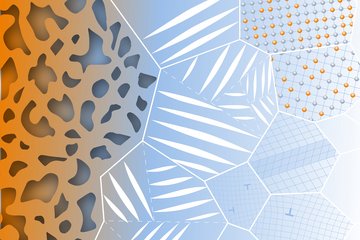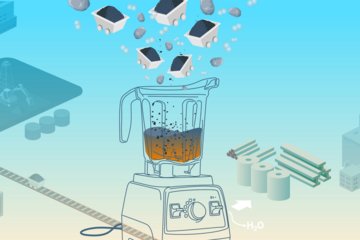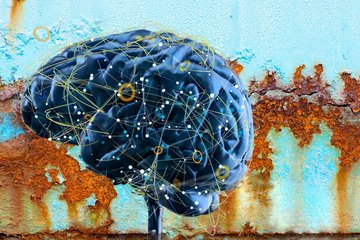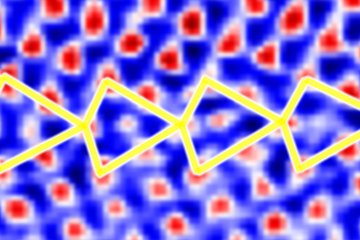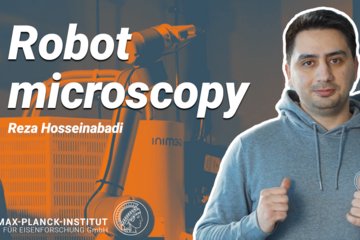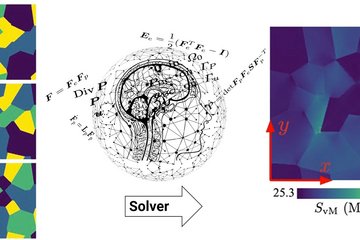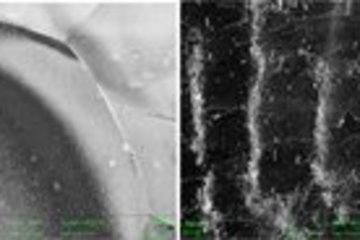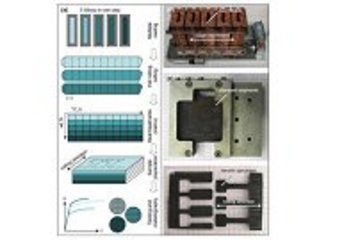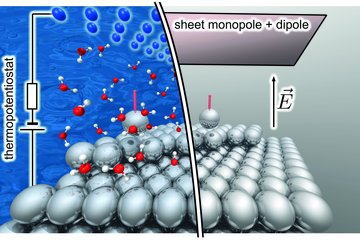All genres
1.
Journal Article
Study of cavity evolution during creep by synchrotron microtomography using a volume correlation method. Praktische Metallographie/Practical Metllography 45 (5), pp. 242 - 245 (2008)
2.
Journal Article
In-situ 3D Quantification of the Evolution of Creep Cavity Size, Shape and Spatial Orientation using Synchrotron X-ray Tomography. Materials Science and Engineering A 478, pp. 108 - 118 (2008)
3.
Journal Article
In-situ tomographic investigation of brass during high-temperature creep. Scripta Materialia 59 (5), pp. 558 - 561 (2008)
4.
Journal Article
Visualisierung der Kriechschädigung in Messing durch Tomographie mit Synchrotronstrahlung. Metall 61, p. 742 - 742 (2007)
5.
Conference Paper
Investigation of creep cavity coalescence in brass by in-situ synchrotron X-ray microtomography. In: Proceedings - Spie the International Society for Optical Engineering (Ed. Stock, S. R.). SPIE Optics + Photonics 2008, San Diego, CA, USA, August 10, 2008 - August 14, 2008. SPIE, Bellingham, WA, USA (2008)
6.
Talk
In-Situ Investigation of Creep and Creep Damage Using Synchrotron Microtomography. Workshop on X-Ray Micro Imaging of Materials, Devices and Organisms, Dresden, Germany (2008)
7.
Talk
Application of microtomography to engineering materials. Workshop on X-Ray Micro Imaging of Materials, Devices and Organisms, Dresden, Germany (2008)
8.
Talk
Tomographic method for the evaluation of activation energy of creep. MSE08 Materials Science and Engineering, Nürnberg (2008)
9.
Talk
In-situ synchrotron tomography investigation of creep damage. SPIE Optics + Photonics 2008, San Diego, CA, USA (2008)
10.
Talk
In-situ investigation of creep damage using synchrotron X-ray microtomography. VIII Simpósio Mecanica Computacional, SIMMEC 2008, Belo Horizonte, Brazil (2008)
11.
Talk
In-situ microtomographic investigation of creep in leaded brass. VI-PNAM Symposium, Berlin, Germany (2008)
12.
Talk
In-situ Characterisation of Creep Damage Evolution in Metallic Materials using Synchrotron Tomography. Symposium "Microstructural Characterisation down to the Atomic Scale", Leoben / Österreich (2007)
13.
Talk
In-situ investigation of creep damage using synchrotron X-ray microtomography. Lenkungsausschuss der AGHT, Düsseldorf (2007)
14.
Talk
Caracterizacion in-situ en 3D de Danos durante creep usando XMT. Seminario de Ciencias de Mateariales, Huelva, Spain (2007)
15.
Talk
Quantitative assessment of inhomogeneous creep cavity distribution. E.MRD Fall Meeting 2007, Warsaw, Poland (2007)
16.
Talk
In-situ 3D characterization of creep cavities using synchrotron X-ray microtomography. Euromat 2007, Nürnberg (2007)
17.
Talk
Investigation of creep damage evolution in alloys and composites using synchrotron radiation. 2007 Denver X-ray Conference, Colorado, USA (2007)
18.
Talk
Caracterizacion in-situ en 3D de danos durante creep usando XMT. Jornadas de Investigadoren Iberoamericanos en Ciencia de Materiales, Alicante, Spain (2007)
19.
Talk
In-situ Untersuchung der Entwicklung der Kriechschädigung in metallischen Werkstoffen. 53.Metallkunde-Kolloquium, Lech / Österreich (2007)
20.
Talk
In-situ 3D Investigation of Creep Damage. XTOP 2006, 8th Biennial Conference on High Resolution, X-Ray Diffraction and Imaging, Karlsruhe, Baden-Baden, Germany (2006)
